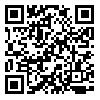Volume 77, Issue 7 (October 2019)
Tehran Univ Med J 2019, 77(7): 434-439 |
Back to browse issues page
Download citation:
BibTeX | RIS | EndNote | Medlars | ProCite | Reference Manager | RefWorks
Send citation to:



BibTeX | RIS | EndNote | Medlars | ProCite | Reference Manager | RefWorks
Send citation to:
Ameri A. EMG-based wrist gesture recognition using a convolutional neural network. Tehran Univ Med J 2019; 77 (7) :434-439
URL: http://tumj.tums.ac.ir/article-1-9992-en.html
URL: http://tumj.tums.ac.ir/article-1-9992-en.html
Department of Biomedical Engineering, School of Medicine, Shahid Beheshti University of Medical Sciences, Tehran, Iran. , ameri@sbmu.ac.ir
Abstract: (2848 Views)
Background: Deep learning has revolutionized artificial intelligence and has transformed many fields. It allows processing high-dimensional data (such as signals or images) without the need for feature engineering. The aim of this research is to develop a deep learning-based system to decode motor intent from electromyogram (EMG) signals.
Methods: A myoelectric system based on convolutional neural networks (CNN) is proposed, as an alternative to conventional classification methods that depend on feature engineering. The proposed model was validated with 10 able-bodied subjects during single and combined wrist motions. Eight EMG channels were recorded using eight pairs of surface electrodes attached around the subject’s dominant forearm. The raw EMG data from windows of 167ms (200 samples) in 8 channels were arranged as 200×8 matrices. For each subject, a CNN was trained using the EMG matrices as the input and the corresponding motion classes as the target. The resulting model was tested using a 4-fold cross-validation. The performance of the proposed approach was compared to that of a standard SVM-based model that used a set of time-domain (TD) features including mean absolute value, zero crossings, slope sign changes, waveform length, and mean frequency.
Results: In spite of the proven performance and popularity of the TD features, no significant difference (P=0.19) was found between the classification accuracies of the two methods. The advantage of the proposed model is that it does not need manual extraction of features, as the CNN can automatically learn and extract required representations from the EMG data.
Conclusion: These results indicate the capacity of CNNs to learn and extract rich and complex information from biological signals. Because both amplitude and frequency of EMG increases with increasing muscle force, both temporal and spectral characteristics of EMG are needed for efficient estimation of motor intent. The TD set, also includes these types of features. The high performance of the CNN model shows its capability to learn temporal and spectral representations from raw EMG data.
Methods: A myoelectric system based on convolutional neural networks (CNN) is proposed, as an alternative to conventional classification methods that depend on feature engineering. The proposed model was validated with 10 able-bodied subjects during single and combined wrist motions. Eight EMG channels were recorded using eight pairs of surface electrodes attached around the subject’s dominant forearm. The raw EMG data from windows of 167ms (200 samples) in 8 channels were arranged as 200×8 matrices. For each subject, a CNN was trained using the EMG matrices as the input and the corresponding motion classes as the target. The resulting model was tested using a 4-fold cross-validation. The performance of the proposed approach was compared to that of a standard SVM-based model that used a set of time-domain (TD) features including mean absolute value, zero crossings, slope sign changes, waveform length, and mean frequency.
Results: In spite of the proven performance and popularity of the TD features, no significant difference (P=0.19) was found between the classification accuracies of the two methods. The advantage of the proposed model is that it does not need manual extraction of features, as the CNN can automatically learn and extract required representations from the EMG data.
Conclusion: These results indicate the capacity of CNNs to learn and extract rich and complex information from biological signals. Because both amplitude and frequency of EMG increases with increasing muscle force, both temporal and spectral characteristics of EMG are needed for efficient estimation of motor intent. The TD set, also includes these types of features. The high performance of the CNN model shows its capability to learn temporal and spectral representations from raw EMG data.
Type of Study: Original Article |
Send email to the article author
| Rights and permissions | |
 |
This work is licensed under a Creative Commons Attribution-NonCommercial 4.0 International License. |





